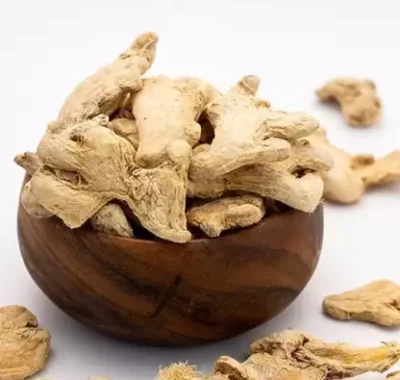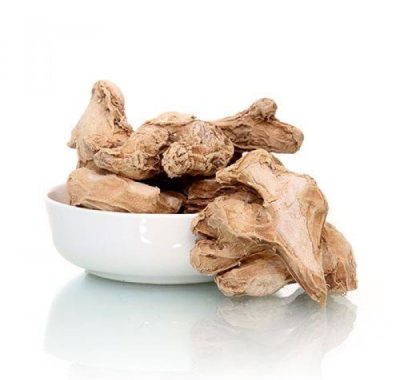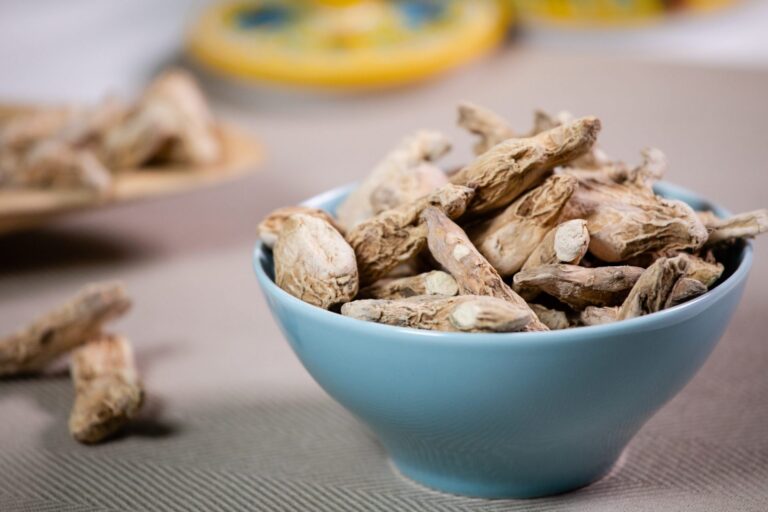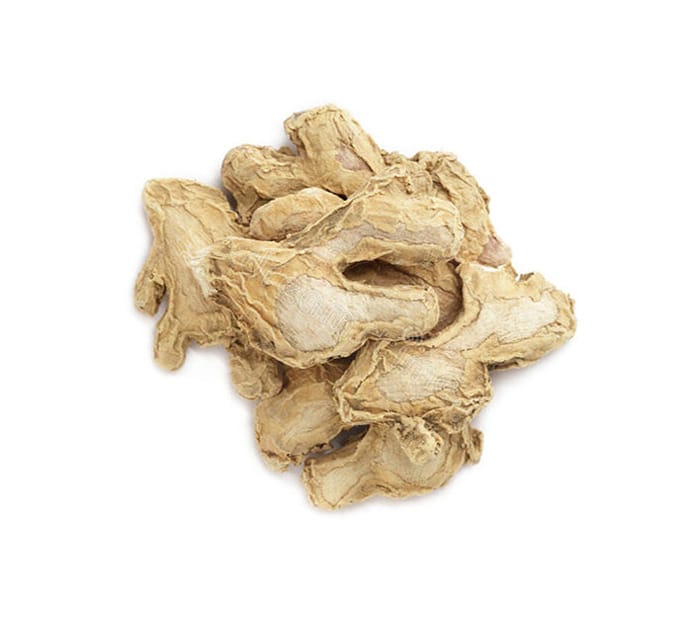Dry Ginger: A Comprehensive Guide
Ginger is a perennial herb that has been used for centuries for culinary and medicinal purposes. It belongs to the Zingiberaceae family and is widely cultivated in tropical and subtropical regions. Ginger has several forms, including fresh, dried, and powdered. In this article, we will focus on dry ginger, its uses, benefits, and technical information.
Dry ginger, also known as “Sonth” in Hindi, is a popular spice used in Indian and Asian cuisines. Ginger has been used for medicinal purposes for centuries due to its anti-inflammatory and anti-oxidant properties. In this article, we will explore the tips and benefits of incorporating dry ginger into your diet.
What is Dry Ginger?
Dry ginger is derived from fresh ginger, which is harvested and then dried. The process of drying ginger involves peeling the fresh ginger and then allowing it to dry in the sun or in a dehydrator until it becomes hard and dry. The resulting product is a spice that has a pungent aroma and a slightly sweet and spicy taste. Dry ginger is also known as sun-dried ginger or air-dried ginger. It is commonly used in Asian and Middle Eastern cuisine and is an essential ingredient in many spice blends, such as curry powder and garam masala.
How is Dry Ginger Processed?
The process of making dry ginger involves several steps:
- Harvesting: The ginger plant is harvested when the rhizomes are mature and the leaves have turned yellow.
- Washing and Peeling: The harvested ginger is washed thoroughly to remove any dirt and debris. The outer layer of the ginger is then peeled using a sharp knife or a peeler.
- Slicing: The peeled ginger is sliced into thin pieces or small cubes, depending on the desired end product.
- Drying: The sliced ginger is then dried either in the sun or in a dehydrator until it becomes hard and brittle.
- Packaging: The dried ginger is then packaged in airtight containers to prevent moisture and air from getting in.


Chemical Composition of Dry Ginger
Dry ginger contains several bioactive compounds that give it its characteristic flavor and aroma. The major compounds found in dry ginger include gingerols, shogaols, and zingerone. These compounds have several health benefits, which we will discuss in the next section. Dry ginger also contains essential oils, such as zingiberene, phellandrene, and cineol, which contribute to its aroma and flavor.
Health Benefits of Dry Ginger
Dry ginger has several health benefits, including:
- Anti-inflammatory properties: The compounds found in dry ginger have anti-inflammatory properties that can help reduce inflammation in the body. This makes it an effective remedy for conditions such as osteoarthritis, rheumatoid arthritis, and other inflammatory conditions.
- Digestive health: Dry ginger can help improve digestive health by stimulating the production of digestive enzymes. It can also help alleviate nausea and vomiting.
- Respiratory health: Dry ginger can help alleviate respiratory problems such as coughs, colds, and asthma. It has expectorant properties that can help clear mucus from the lungs and bronchial tubes.
- Immune system support: Dry ginger contains antioxidants that can help boost the immune system and protect the body against diseases and infections.
- Pain relief: Dry ginger can help alleviate pain by blocking the production of prostaglandins, which are responsible for causing pain and inflammation.
- Cardiovascular health: Dry ginger can help lower cholesterol levels and reduce the risk of heart disease.

Nutritional Value of Dry Ginger
Dry ginger is low in calories and high in nutrients. It contains essential vitamins and minerals such as vitamin B6, magnesium, and potassium. It is also a good source of fiber and antioxidants.
Tips for Incorporating Dry Ginger into Your Diet
- Ginger Tea: Ginger tea is an easy and delicious way to incorporate dry ginger into your diet. Add a teaspoon of dried ginger to a cup of hot water, steep for a few minutes, and enjoy.
- Ginger Powder in Cooking: Add dry ginger powder to your favorite recipes, such as curries, soups, and stews. It adds a warm and spicy flavor to the dish and provides health benefits.
- Ginger Supplements: Dry ginger supplements are available in capsule form and can be taken daily to provide health benefits.
Delicious Dry Ginger Recipes: Adding a Zing to Your Meals
Ginger is a versatile spice that has been used in cooking for centuries. It adds a zing to dishes and has a warm and earthy flavor. While ginger is commonly used in savory dishes like curries and stir-fries, it can also be used in sweet treats like gingerbread cookies and ginger chai latte. In this article, we will explore some delicious dry ginger recipes that you can add to your meals.
- Ginger Chicken Stir-Fry
This ginger chicken stir-fry is a quick and easy dish that is perfect for a weeknight dinner. Here’s what you’ll need:
Ingredients:
- 1 lb boneless, skinless chicken breasts, sliced into thin strips
- 1 red bell pepper, sliced into thin strips
- 1 green bell pepper, sliced into thin strips
- 1 onion, sliced into thin strips
- 2 cloves garlic, minced
- 1 tablespoon fresh ginger, minced
- 2 tablespoons soy sauce
- 1 tablespoon cornstarch
- 1 tablespoon vegetable oil
- Salt and pepper, to taste

Instructions:
- In a small bowl, whisk together the soy sauce and cornstarch.
- Season the chicken with salt and pepper.
- Heat the vegetable oil in a large skillet over medium-high heat.
- Add the chicken to the skillet and cook for 5-6 minutes, until browned on all sides.
- Remove the chicken from the skillet and set aside.
- Add the bell peppers, onion, garlic, and ginger to the skillet and cook for 3-4 minutes, until the vegetables are tender.
- Add the chicken back to the skillet and pour the soy sauce mixture over the chicken and vegetables.
- Cook for an additional 2-3 minutes, until the sauce has thickened.
- Serve hot over rice or noodles.
Gingerbread Cookies
Gingerbread cookies are a classic holiday treat, but they can be enjoyed year-round. Here’s how you can make your own gingerbread cookies:
Ingredients:
- 3 cups all-purpose flour
- 1 teaspoon baking soda
- 3/4 teaspoon salt
- 2 teaspoons ground ginger
- 1 teaspoon ground cinnamon
- 1/4 teaspoon ground cloves
- 1/4 teaspoon ground nutmeg
- 3/4 cup unsalted butter, at room temperature
- 3/4 cup dark brown sugar
- 1/2 cup molasses
- 1 egg
- 1 teaspoon vanilla extract

Instructions:
- Preheat the oven to 350°F (175°C).
- In a medium bowl, whisk together the flour, baking soda, salt, ginger, cinnamon, cloves, and nutmeg.
- In a separate bowl, cream together the butter and brown sugar until light and fluffy.
- Add the molasses, egg, and vanilla extract to the butter mixture and mix until well combined.
- Gradually add the dry ingredients to the wet ingredients and mix until a dough forms.
- Roll out the dough on a floured surface to about 1/4 inch thickness.
- Cut out shapes with cookie cutters and place them on a baking sheet lined with parchment paper.
- Bake for 10-12 minutes, until the edges are slightly browned.
- Allow the cookies to cool completely before serving.
Tasty & Quality Approved Agricultural Products
are Available Here!
We supply and export great-quality Bold Peanuts, Java Peanuts, TJ Peanuts, Fresh Red Onion, White Garlic, Yellow Maize, Dry Red Chill and In Shell Peanuts with 100% customer satisfaction all over the world.

